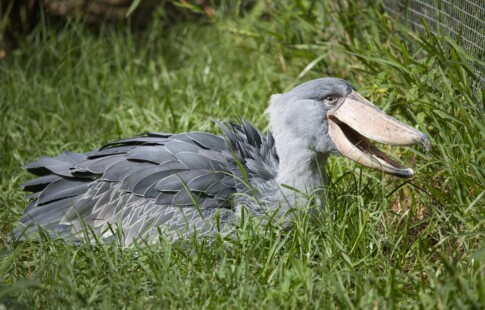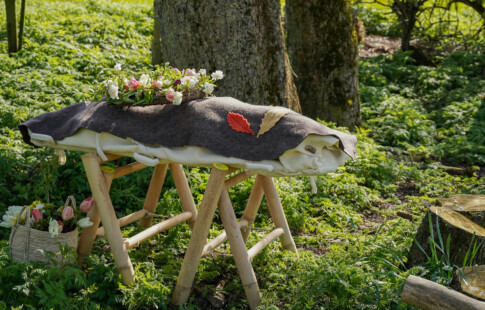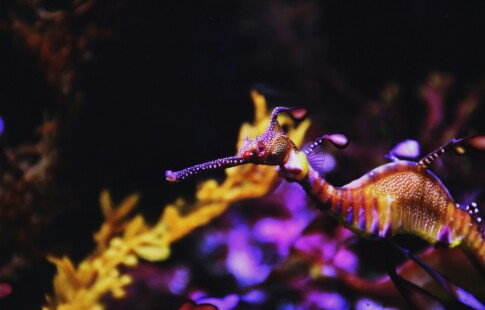
6 Ways to Limit Light Pollution (Even during the Holidays
We are reader-supported. When you buy through links on our site, we may earn affiliate commission.
Light pollution poses severe environmental risks. It might not strangle waterfowl like an uncut 6-pack ring, but it disrupts migratory patterns. It contributes to the firefly disappearance and disrupts human sleep. Combating the problem takes everyone’s contribution. What can you do to make your property more compliant? Here are six ways to limit light pollution — even during the holidays.
1. Put a Lid on It
Light pollution occurs when ambient light from exterior fixtures floods the sky. One of the simplest fixes you can make is to replace your outdoor lights with dark-sky compliant models that shield rays from going upwards and outwards. Instead, these models direct light downward where you need it the most, anyway — after all, you need to see where you step.
It helps to understand basic lighting styles. For example, stay away from colonial and colonial revival styles with glaring open bulbs that cast light in every direction. Classical lights likewise send too much illumination skyward. It’s best to stick with Victorian, ranch, cottage or Tudor styles that feature top shades that protect the night sky from pollution.
Another option is enclosing your light behind a screen to dim it. For example, you can find brushed copper plates with pinhole designs that cast just enough illumination to get your key in the front lock without concealing any would-be miscreants in the shadows off your porch.
2. Think Warm, Amber Tones
Light comes in various spectrums. You’re probably most familiar with blue light. It’s the same stuff emitted by your television and computer screens, mimicking the sun’s rays. That’s why it’s important to keep electronics out of the bedroom. Exposure to this wavelength interferes with melatonin production, a vital sleep hormone. Without sufficient levels of this substance, you struggle to fall under.
This wavelength also disrupts the circadian rhythms of various animals. Fortunately, you can cut blue light by opting for warm, amber tones. Why? If you look at a color temperature chart, this wavelength produces lower numbers on the Kelvin scale. The lower you go, the better for nocturnal animals.
However, the critters aren’t the only ones that benefit. Bright outdoor lighting at night creates shadows, concealing folks who don’t want to be seen from view. Switching to amber light cuts glare and harsh contrasts, allowing you to see your immediate surroundings more clearly, protecting your safety.
3. Use a Timer
Did you know that most astronomers, be they amateur or professional, don’t say up late waiting for nightfall? Many of them nap and head out around 2 or 3 a.m. when light interference is at its lowest. You can do them and nocturnal creatures like fireflies a solid by putting your lights on a timer.
This trick also applies to your holiday lighting. If possible, designate one master outlet where you install a timer regulating how long your Santa waves ho-ho-ho while illuminating your front lawn. These devices are particularly vital if you use projectors that cast a colorful scene onto your home’s face. While it may look festive, leaving it on all night disrupts sleep patterns — and might make your neighbors a bit sore.
4. Put It in Motion
Motion detectors likewise minimize light pollution by keeping things in the dark until you need them — or until you want to receive noiseless alerts about passersby. Most are easy to install. You don’t even need a screwdriver for a camping model — use a bit of Shoe Goo to attach it to the desired surface.
While it may seem logical to place these devices near windows, the glare from inside or outside can trip them when unnecessary or leave them dark when a would-be intruder walks directly toward them. The best places are in corners covering your front door and your bedroom — thieves often strike that location to locate jewelry and valuables.
5. Keep It Low
How low can you go? This question doesn’t refer to the limbo but where you genuinely need light at night. Chances are, you need to illuminate walkways to get from your car to your front door. You don’t need an eye-level spotlight to navigate.
Instead, opt for short, covered solar lamps that only extend slightly above the ground. You’ll get plenty of illumination where you need it without sending it up the sky — where you don’t.
6. Watch for Reflective Surfaces
Reflective surfaces matter for more than your motion detectors. They can also project illumination skyward. For example, that suncatcher in your garden might look beautiful in daylight, but it could turn into a disco ball at night if your patio light catches it the right way. Place such objects with care.
Pay attention to your windows when placing garage lights. Carriage lights on an even level can turn your decorative cutouts into shiny mirrors scattering their illumination hither and yon. Mount them a few inches lower or higher to avoid this issue.
Finding Ways to Limit Light Pollution (Even during the Holidays)
People need exterior lights for various reasons. Illuminating your home for the holidays captures the season’s magic — you don’t have to give up that ritual.
However, you should be considerate of others, including the nocturnal creatures that share our world. Use the six methods above to limit light pollution, even after getting your holiday cheer going for the season.
Share on
Like what you read? Join other Environment.co readers!
Get the latest updates on our planet by subscribing to the Environment.co newsletter!
About the author

Steve Russell
Steve is the Managing Editor of Environment.co and regularly contributes articles related to wildlife, biodiversity, and recycling. His passions include wildlife photography and bird watching.





